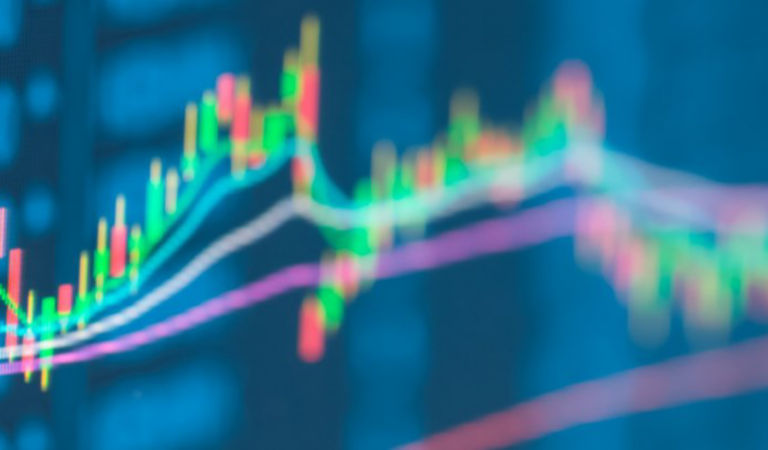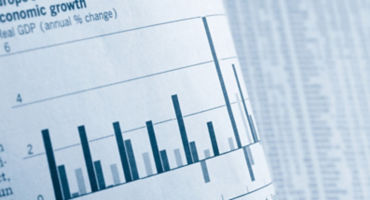Equities
United States
US equities (+8.7%) advanced for the third straight quarter, largely driven by a potent rally in a narrow group of megacap technology companies that benefited from investor optimism about their earnings potential and growth prospects and exuberance surrounding generative artificial intelligence. Markedly stronger-than-forecast first-quarter corporate earnings and improving earnings prospects bolstered market sentiment. Despite the strains from lofty interest rates and tightening credit conditions, the economy showed remarkable vigor; a robust labor market, resilient consumer spending, and renewed strength in the housing market offered hope that the US could achieve a moderate economic slowdown rather than a full-blown recession. In June, the Fed held interest rates stable for the first time in 15 months to assess the impact of tighter monetary policy and recent banking industry stresses on the economy and inflation. However, most Fed policymakers anticipate two more rate hikes this year amid concerns that stronger-than-expected economic growth and robust wage gains could lead to more persistent inflation. Annualized US GDP in the first quarter was revised sharply higher to 2% — well above the previous estimate of 1.3% — driven by the largest annual increase in consumer spending since mid-2021. Following months of high stakes political negotiations that unsettled financial markets, President Joe Biden signed into law a bill to suspend the US debt ceiling and limit government spending.
Economic data released during the quarter signaled that the US economy remained on a solid footing. The labor market was surprisingly buoyant, even as the demand for workers gradually softened. In May, nonfarm payrolls grew by a robust 339,000 after solid gains in April, unemployment rose modestly to 3.7%, jobless claims were relatively stable, and average hourly earnings grew at a stout 4.3% annual pace. The buoyant job market and healthy household finances helped support consumer spending. However, core personal consumption expenditures rose only 0.1% in May after a downwardly revised 0.4% gain in April, underscoring a gradual slowing in spending amid tighter credit conditions and high interest rates. The Conference Board’s Consumer Confidence Index dropped in April and May and then surged to a 17-month high of 109.7 in June. Very favorable views of the economy’s current state contrasted with weak future expectations, with individuals signaling less willingness to make big outlays. The housing market showed a renewed burst of momentum despite elevated mortgage rates and a recent uptick in house prices. In May, new-home sales, building permits, and housing starts surged amid extremely low housing inventory, leaving home builders increasingly optimistic. The manufacturing sector slumped to a level last seen at the outset of the pandemic, in sharp contrast to a moderate expansion in the services sector. Small-business sentiment held near its lowest level in a decade amid dim views on the outlook for sales, the economy, and credit.
Within the S&P 500 Index (+8.7%), nine of the 11 sectors posted positive results for the quarter. Information technology (+17.2%) was the top-performing sector, led by the software (+17.1%) and semiconductors & semiconductor equipment (+23.6%) groups. Consumer discretionary (+14.6%) outperformed, with the broadline retail (+24.9%) and automobiles (+24.3%) groups contributing the most. Communication services (+13.1%) also outperformed, most notably interactive media & services (+21.4%). Utilities (-2.5%) and energy (-0.9%) were the worst-performing sectors. Consumer staples (+0.5%) also underperformed, led lower by personal care products (-20.0%) and food products (-2.1%).
Europe
European equities (+2.1%) ended the quarter higher. Tightening credit standards and a pronounced downturn in the manufacturing sector weighed on the region’s economy. The Flash Eurozone Composite PMI indicated that business output growth almost stalled in June, and first-quarter eurozone GDP was revised lower to a 0.1% decline, driven by volatile energy prices, tightening monetary policy, declining manufacturing orders, and increasing labor costs. In an effort to curb persistent price pressures, central banks across Europe continued to tighten monetary policy, signaling additional rate hikes in the coming months. The ECB slowed its pace of interest-rate hikes to 25 basis points (bps) in May and lifted rates by an additional 25 bps in June. Preliminary estimates showed that eurozone headline inflation markedly eased to 5.5% in June, from 6.9% in March, driven by lower energy prices. However, policymakers were more concerned about stubbornly high core inflation amid strong wage growth and rising input costs in the services sector. At the ECB’s annual conference in Sintra, Portugal, ECB President Christine Lagarde reaffirmed an aggressive stance on fighting inflation and stated that a eurozone recession was not the bank’s baseline forecast. Russian President Vladimir Putin reasserted his leadership by thwarting a mutiny by the troops of former ally and Wagner Group boss Yevgeny Prigozhin.
The downturn in Europe’s manufacturing sector intensified over the quarter as the HCOB Eurozone Manufacturing PMI slid to 43.4 in June, from 47.3 in March. In June, business conditions broadly deteriorated across the region, and production volumes contracted at the sharpest pace since October of last year. Employment dropped for the first time since January 2021, but output prices fell significantly as supply chains improved — a positive sign for inflation. Manufacturing frailties starkly contrasted with a sturdier services sector. However, the Flash Eurozone Composite PMI in June showed that services-sector growth fell steeply after robust gains in the previous two months. Buoyed by wage pressures, input costs continued to rise, but the rate of increase moderated by the most since May 2021. The European Commission’s Economic Sentiment Indicator declined further in June, to 94.0; improving consumer confidence throughout the quarter was offset by a fifth consecutive drop in confidence among business managers.
In Germany (+3.1%), strong first-quarter corporate earnings were overshadowed by a steep downturn in the manufacturing sector. The ZEW Indicator of Economic Sentiment rebounded in June but remained in negative territory, with no expectations of improving economic growth in the second half of the year due to strained exports from a subdued global economy. The UK (-0.6%) avoided a recession in the first quarter, but the economic outlook remained weak amid the strains of high inflation. Core inflation accelerated to its highest level since 1992, rising 7.1% year over year in June and firming consensus views that interest rates will peak above 6% by the end of the year. The BOE indicated that it no longer anticipates a recession, but the bank’s governor, Andrew Bailey, acknowledged that the country is facing a wage-price spiral. In Greece (+23.4%), New Democracy party leader Kyriakos Mitsotakis won a second term as prime minister. Stocks and bonds rallied on optimism that political stability and the pro-investment government could aid the economy. In Sweden (+3.4%), financial strains at the country’s largest commercial real estate firm heightened concerns about financial troubles in the property market.
Pacific Basin
Pacific Basin equities (+9.5%) were led higher by Japan (+15.6%), where the Nikkei Index rose to a multi-decade high. Investors grew more optimistic about the outlook for Japanese equities and the economy amid solid first-quarter corporate earnings, attractive valuations, corporate governance reforms, easy monetary policy, and a consumption-led recovery. GDP expanded at a 2.7% annualized pace in the first quarter — well above the earlier estimate of 1.6% — underpinned by a post-pandemic rebound in domestic consumption that was supported by rising wage growth and government stimulus. Japanese inflation rose at a brisk pace, fueling speculation that the central bank will raise its inflation forecasts and potentially tweak its stimulus program in July. A measure of core inflation that excludes food and energy accelerated 4.3% year over year in May — the highest reading since 1981. Bank of Japan Deputy Governor Ryozo Himino stressed the need to maintain loose monetary policy but also noted that recent price increases were stronger than projected and inflation expectations were rising, a clearer indication that central bank officials perceive wage and consumer demand factors as playing a greater role in inflation.
In Australia (+0.9%), persistent inflation led the Reserve Bank of Australia (RBA) to unexpectedly raise interest rates by 25 bps, to 4.1% — the highest level since April 2012 — in an effort to bring inflation back to target by mid-2025. Australia’s headline and core inflation subsequently slowed more than anticipated in May, rising 5.6% and 6.1%, respectively, from a year earlier. The marked slowdown in price gains contrasted with a robust labor market, surging labor costs, and a rebounding housing market, which added to the inflation impulse and created considerable uncertainty about the RBA’s future policy decisions. First-quarter GDP growth was revised lower to 0.2%, the weakest three-month expansion since September 2021. This disappointing result revealed that aggressive policy tightening weighed on household spending and construction, while accelerating labor costs underscored stubborn inflation pressures in the economy. In May, job growth of 75,900 and a decline in the unemployment rate, to 3.6%, appeared to support the RBA’s hawkish stance. Consumer sentiment in May was near a record low as consumers cut back on spending in the face of rising interest rates and high inflation.
In Hong Kong (-5.2%), first-quarter GDP expanded 2.7% from a year earlier, well above expectations of 0.5%, marking the first quarterly gain in more than a year. However, exports fell for a thirteenth consecutive month, with weak demand from China and the rest of the world continuing to strain the city’s economic outlook. The interbank lending rate rose to its highest level since 2007, which could further pressure Hong Kong’s economic recovery. Singapore’s (-4.1%) export-dependent economy was hampered by slowing global economic growth as exports in May slumped for the eighth straight month. In New Zealand (-4.0%), the central bank lifted interest rates by 25 bps in May, to a 14-year high of 5.5%, and signaled that policy tightening was completed.
Emerging Markets
Emerging markets (EM) equities (+1.8%) rose in the second quarter. Latin America and Europe, the Middle East, and Africa (EMEA) outperformed, while Asia lagged.
Latin American (+9.2%) equites rose. In Brazil (+14.9%), the central bank held rates steady at 13.75% in June and signaled the possibility of a rate cut in August amid evidence of deflation. The decision defied President Luiz Inácio Lula da Silva’s intense pressure for rate cuts. Brazil’s National Monetary Council introduced a 3% inflation target to be met by 2026, extending the time horizon for taming inflation, while Congress advanced the government’s new fiscal rules, seen as crucial to curbing public debt. In Mexico (+0.4%), the central bank held rates steady at 11.25% as subsiding inflationary pressures prompted a more accommodative policy outlook. A historically high level of inbound travel supported Mexico’s economic growth.
EMEA (+5.7%) finished higher. Decelerating inflation in eastern Europe, notably in Poland (+17.4%) and Hungary (+21.8%), sparked hopes for an easier policy stance from central banks. Saudi Arabia (+6.3%) and the United Arab Emirates (+5.8%) were supported by positive commentary from the International Monetary Fund (IMF). Saudi Arabia’s efforts to curb its reliance on oil production gained momentum as economic diversification opportunities materialized, and the country’s energy minister announced a deeper cut to oil supplies in July. Greece (+23.4%) surged after a decisive victory by Prime Minister Kyriakos Mitsotakis’s New Democracy party in parliamentary elections secured him a second term in office, bolstering optimism that political stability and the pro-investment government could aid the economy. In Turkey (+21.4%), the central bank sharply increased interest rates, to 15%, to tame painfully high inflation. The decision came on the heels of President Recep Tayyip Erdoğan’s reelection and the appointment of a new central bank governor, Hafize Gaye Erkan.
Asia (+0.5%) ended modestly higher. China (-8.9%) fell steeply on concerns about geopolitical tensions and a weaker-than-expected economic recovery, underscored by lackluster domestic and external demand, softening manufacturing and services activity, weak inflation, and property market frailties. In June, the People’s Bank of China modestly cut prime interest rates to stimulate a sputtering economy and boost consumption, but increasingly pessimistic views about the country’s growth prospects heightened calls for greater stimulus measures. A meeting between US Secretary of State Antony Blinken and Chinese President Xi Jinping offered some hope that relations between the two countries would stabilize. However, tensions remained high after Taiwan (+7.2%) announced a new trade agreement with the United States. South Korea (+5.8%) approached a bull market, as investor enthusiasm over artificial intelligence sparked a rally in the nation’s semiconductor stocks. In Thailand (-4.8%), voters delivered a stunning win for the pro-democracy opposition in the country’s general election, but there is no clear sign that coalition party leader Pita Limjaroenrat will be able to become prime minister and end nine years of military-dominated rule. India (+12.2%) surged. The IMF forecast India would outperform all major developed and EM economies in 2023, with GDP growth estimated to be 5.9% for the year. Manufacturing activity accelerated during the quarter; annual inflation dipped below consensus expectations, to 4.25% in May; and the central bank held interest rates unchanged at 6.5%.
Fixed Income
Economic data remained resilient, while inflation decelerated but remained at stubbornly high levels across most DM economies. In the US, strength persisted in labor market data, consumer confidence surged, and some measures of consumer spending eased. Inflation in the UK surprised to the upside and printed at one of the highest levels among DM countries. Germany entered a technical recession in the first quarter, as GDP declined for the second straight quarter. Declining new orders and employment pushed the HCOB Eurozone Manufacturing PMI deeper into contractionary territory, while the HCOB Eurozone Services PMI expanded at a slower pace. Japanese industrial production declined, partly due to supply chain challenges that impacted semiconductors. The official NBS Manufacturing PMI contracted in China, weighed down by weaker global demand and a slowdown in small-business operations.
Sticky inflation and hawkish central banks pushed bond yields higher, leading to negative returns across most global sovereign markets. Gilt yields increased the most as the UK continued to grapple with high inflation, spurring the BOE to reaccelerate its rate hikes later in the quarter. Australian interest rates continued to rise, with the RBA’s surprise increase fueling concerns that global interest rates could remain higher for longer. US yields rose, particularly at the front end, and the yield curve inversion deepened. Following a 25 bps rate hike in May, the Fed paused in June while retaining a hawkish tilt. European yields ended higher, albeit to a lesser extent relative to the UK and US. As widely expected, the ECB delivered two consecutive rate increases of 50 bps and signaled more hikes ahead. The BOJ remained a notable exception, as it retained its accommodative policy stance despite mounting core inflation.
Currencies
The US dollar ended the quarter mixed against G10 currencies, gaining against the Japanese yen and Nordic currencies but weakening relative to the British pound and Swiss franc, as central banks increasingly charted different courses. European and dollar-bloc currencies rose as the Fed paused its rate hikes but retained its hawkish stance, while other policymakers continued to pursue aggressive interest-rate trajectories to tackle persistently high inflation. The Japanese yen continued to weaken as the BOJ opted to maintain its ultra-loose monetary policy settings despite the appointment of a new central bank governor and increasing rumors of further foreign-exchange interventions. EM currencies ended mixed. The Turkish lira significantly depreciated against the US dollar after the reelection of Turkish President Recep Tayyip Erdoğan in May. The rand tumbled over the quarter as South Africa continued to struggle with an energy crisis. Latin American currencies gained, led by the Colombian and Mexican peso, thanks to improving economic data.
Commodities
Energy (-3.2%) fell during the quarter. US natural gas (+5.9%) surged, mostly predicated on a less pessimistic near-term view due to persistently strong gas usage for power generation. Hotter near-term weather forecasts also helped to support prices, although stockpiles that are approximately 16% ahead of their five-year seasonal average curtailed significant price spikes. Gasoline (+3.7%) was bolstered by expectations for a record number of US drivers during the Fourth of July holiday. Heating oil (-3.5%) and gas oil (-3.7%) declined amid high stockpiles, lower demand, and ongoing concerns about lackluster global economic growth. Crude oil (-4.5%) prices dipped as China’s manufacturing activity contracted at a steeper pace in the second quarter, signaling that the economy of the world’s biggest crude importer is losing momentum.
Industrial metals (-9.1%) ended significantly lower. Copper (-6.3%) erased the gains from earlier in the year, which were fueled by speculation that China’s reopening would spur demand. Aluminum (-11.0%) plummeted on the back of a weak demand outlook, while nickel (-13.4%) was hindered by ongoing liquidity struggles, concerns about weak near-term demand in China, and an uncertain global economic outlook. Zinc (-17.3%) plunged as China’s slowing manufacturing activity emphasized weakness in the top metals-consuming economy. The consumption outlook for lead (+1.3%) improved on expectations that China will roll out more stimulus to support the country’s recovery.
Precious metals (-2.8%) slid as silver (-5.1%) and gold (-2.5%) ended the period lower. The prospect of more monetary tightening by the US and European central banks weighed on precious metals, which were also constrained by gains in the US dollar.
Agriculture & livestock (+0.9%) rose marginally. Cocoa (+19.3%) rallied to a 46-year high during the period; cocoa production declined as a result of adverse weather in the countries of major producers, particularly the Côte d’Ivoire and Ghana, which account for more than 60% of global output. Feeder cattle (+13.0%) and live cattle (+12.2%) generated robust gains on persistently tight cattle supplies (the US beef cow herd reached its lowest level since 1962) and continued strong consumer demand despite higher prices. Sugar (+8.1%) surged on mounting worries about tight global supplies. Prices jumped on the prospect of limited exports from key shipper India and lackluster supplies from other countries, including Pakistan and Thailand. Lean hogs (+5.4%) were driven by improving pork demand in response to a surge in beef prices to the third-highest level in history. Soybeans (+5.3%) were boosted by a larger-than-expected deterioration in US growing conditions because of persistent dry weather. Cotton (+1.3%) was supported by supply concerns caused by news that output in top grower China could decline this year after frigid weather delayed sowing and hurt plants in some areas. Coffee (-2.5%) declined on continued harvest pressures in Brazil due to dry weather, while wheat (-7.1%) fell sharply on the prospect of ample global supplies. Corn (-10.8%) slumped on abundant supply forecasts amid expectations of rising Brazilian production, which would increase competition with US crops.













Japan equity: Reason to believe
Continue readingBy
Toshiki Izumi, CFA, CMA